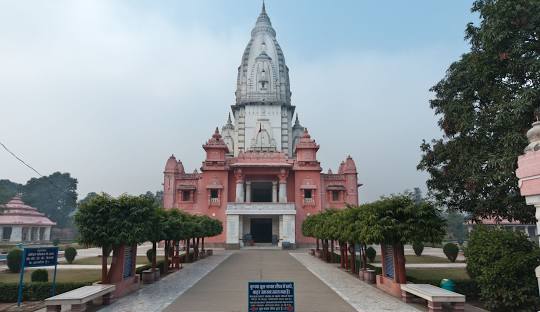
History of Kashi Uttar Pradesh
History of Kashi Uttar Pradesh
Kashi, also known as Varanasi, is one of the oldest living cities in the world. Located in Uttar Pradesh, India, Kashi holds immense cultural, historical, and spiritual significance. Often referred to as the “City of Light,” Kashi has been a prominent center of learning, religion, and culture for thousands of years. In this article, we will explore the history of Kashi Uttar Pradesh, delving into its prehistoric roots, spiritual legacy, and enduring cultural importance.
Keys for History of Kashi Uttar Pradesh
Era | Key Highlights |
Prehistoric Period | Early settlements along the Ganges River |
Vedic Period (1500 BCE) | Mention in Rigveda, emergence as a spiritual hub |
Buddhist Era (6th Century BCE) | Birthplace of Buddhism, visits by Gautama Buddha |
Mauryan Period (322–185 BCE) | Emperor Ashoka’s contribution, spread of Buddhism |
Gupta Period (320–550 CE) | Flourishing of art, culture, and education |
Medieval Period (11th–16th Century) | Islamic invasions, resistance, and partial rebuilding |
Mughal Era (16th–18th Century) | Patronage by Akbar, construction of Vishwanath Temple |
British Period (18th–20th Century) | Kashi’s role in the Indian independence movement |
Post-Independence (1947) | Growth as a cultural and spiritual center |
Kashi in the Prehistoric and Vedic Periods
Prehistoric Roots
The history of Kashi Uttar Pradesh begins in prehistoric times when early settlements were established along the fertile banks of the Ganges River. These settlements thrived due to the region’s rich natural resources and strategic location.
Vedic Significance
- Kashi is prominently mentioned in the Rigveda, one of Hinduism’s oldest texts.
- The city emerged as a significant spiritual hub during the Vedic era.
- The name “Kashi” derives from the Sanskrit word Kāśa, meaning “to shine,” symbolizing enlightenment and divine knowledge.
Kashi During the Buddhist Era
Buddha’s Visit
- Gautama Buddha delivered his first sermon at Sarnath, a site near Kashi, marking the foundation of Buddhism.
- This era saw Kashi becoming a hub for Buddhist learning, attracting scholars and monks worldwide.
Ashoka’s Contribution
- Emperor Ashoka, a devout Buddhist, promoted the religion by constructing stupas and monasteries around Kashi.
- The city’s prominence grew as a center for spiritual dialogue and religious tolerance.
The Mauryan and Gupta Periods
Mauryan Influence
Under the Mauryan dynasty, Kashi flourished as a trade and religious hub. It played a pivotal role in disseminating Buddhist teachings across India and beyond.
Gupta Flourishing
- The Gupta Empire ushered in a golden age of art, culture, and education.
- Temples and universities in Kashi thrived, solidifying its reputation as a global center of learning and culture.
Medieval Turmoil and Resilience
Islamic Invasions
From the 11th century onwards, Kashi faced repeated invasions by Islamic rulers. Despite these challenges, the city’s residents preserved its cultural and spiritual heritage.
Hindu Resistance
The destruction of temples, including the Vishwanath Temple, during invasions did not deter the resilience of Kashi’s people. They rebuilt and sustained the city’s legacy through unwavering devotion.
The Mughal Period
Patronage by Akbar
- Mughal Emperor Akbar, known for his religious tolerance, supported temple reconstruction in Kashi.
- His reign marked a period of cultural harmony and architectural innovation.
Aurangzeb’s Rule
- Aurangzeb’s reign was marked by the destruction of several temples, including the Vishwanath Temple.
- The Gyanvapi Mosque was constructed on the temple’s site, symbolizing a tumultuous chapter in Kashi’s history.
Kashi Under British Rule
Colonial Influence
During British rule, Kashi became a focal point for cultural renaissance and the Indian independence movement. The city’s intellectual and spiritual leaders played a pivotal role in resisting colonial oppression.
Banaras Hindu University (BHU)
Founded in 1916 by Pandit Madan Mohan Malaviya, BHU emerged as a beacon of education and nationalism, further enriching the history of Kashi Uttar Pradesh.
Post-Independence Kashi
Cultural Renaissance
After 1947, Kashi witnessed significant growth in infrastructure and cultural initiatives. The city continues to thrive as a major pilgrimage destination and global tourist attraction.
Spiritual Significance of Kashi
Center of Hinduism
- Home to the revered Kashi Vishwanath Temple, dedicated to Lord Shiva.
- One of the 12 Jyotirlingas, Kashi holds immense spiritual significance for Hindus.
Ganges River
- The sacred Ganges River flows through Kashi, playing a central role in rituals and religious ceremonies.
- Pilgrims consider a dip in the Ganges purifying and essential for spiritual growth.
Festivals and Rituals
Major festivals like Mahashivaratri and Dev Deepawali are celebrated with grandeur, attracting millions of devotees annually.
Architectural Heritage
Temples
Notable temples include the Vishwanath Temple, Sankat Mochan Hanuman Temple, and Durga Temple, each showcasing unique architectural styles and spiritual significance.
Ghats
- Kashi’s iconic ghats, such as Dashashwamedh Ghat and Manikarnika Ghat, are centers of religious and cultural activities.
- These ghats are integral to the history of Kashi Uttar Pradesh and its daily life.
Educational Institutions
Institutions like BHU uphold Kashi’s legacy as a global hub of learning and knowledge dissemination.
Modern-Day Kashi
Tourist Hub
Kashi attracts millions of pilgrims and tourists from across the globe. Its vibrant markets, spiritual aura, and historical sites make it a unique destination.
Cultural Events
Events like the Ganga Mahotsav and Ramlila showcase the city’s vibrant cultural tapestry and historical richness.
Key Takeaways
- The history of Kashi Uttar Pradesh is a testament to its resilience and spiritual significance.
- From prehistoric times to the modern era, Kashi continues to inspire with its timeless charm and enduring legacy.
- Its pivotal role in shaping India’s cultural and religious landscape remains unparalleled.
The history of Kashi Uttar Pradesh is a vibrant tapestry of spirituality, resilience, and cultural excellence. From ancient times to modern-day India, Kashi stands as a beacon of enlightenment and devotion, embodying the essence of eternal light.

Leave your comment